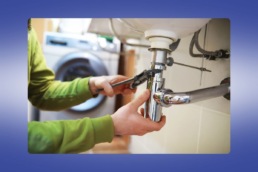Additional Living Expense (ALE) Coverage: Navigating Through Home Repairs
Navigating home repairs after a disaster can be daunting for homeowners. One key component that can significantly alleviate the burden during such times is Additional Living Expense (ALE) coverage.
ALE coverage, a standard part of most homeowners’ insurance policies, is crucial in ensuring that the disruption to a family’s life is minimized by covering the costs associated with temporary housing and living expenses when a home is uninhabitable due to insured disasters.
This comprehensive exploration of ALE coverage aims to demystify its aspects, underscore its importance, and guide utilizing it.
Understanding ALE Coverage
ALE coverage, also known as Loss of Use coverage, is designed to cover the additional costs of living that arise when you are temporarily displaced from your home. This can include hotel bills, restaurant meals, storage fees, and more expenses up to the policy’s limits.
The Insurance Information Institute (III) emphasizes that ALE coverage is not just a convenience but a necessity, providing financial support that allows families to maintain a comparable standard of living at the same time their home is being repaired or rebuilt.
The Scope and Limits of ALE Coverage
Homeowners must understand the scope and the limits of their ALE coverage. Generally, policies have a cap, either in the form of a dollar amount or a time limit.
A 2021 National Association of Insurance Commissioners (NAIC) report highlighted that most policies set ALE limits at 20% to 30% of the dwelling coverage. Knowing these limits is essential for planning and budgeting during the displacement period.
The Importance of ALE Coverage
The significance of ALE coverage cannot be overstated, especially in the context of increasing natural disasters.
According to a study by the Federal Emergency Management Agency (FEMA), there has been a noticeable rise in the frequency of weather-related disasters, leading to an increased likelihood of homeowners needing to rely on ALE coverage. The financial support offered by ALE can alleviate the stress and financial burden of being displaced, making it an indispensable component of a homeowner’s insurance policy.
Navigating Through Home Repairs with ALE
Utilizing ALE coverage effectively requires a clear understanding of the claims process and meticulous record-keeping. Homeowners should:
- Immediately Notify Their Insurance Provider: Prompt notification is essential to kickstart the ALE process.
- Keep Detailed Records: Document all additional expenses incurred due to being displaced. This includes receipts for hotel stays, meals, and other related expenses.
- Understand Policy Details: Familiarize yourself with the specifics of your ALE coverage, including limits and exclusions. This knowledge is crucial for setting realistic expectations and making informed decisions during the displacement period.
Challenges and Considerations
While ALE coverage provides essential financial support, navigating its complexities can present challenges. One common issue is the discrepancy between the perceived and actual coverage limits, which can lead to unexpected out-of-pocket expenses.
Furthermore, the process of documenting and filing claims for ALE benefits can be cumbersome and time-consuming. Homeowners must maintain open and consistent communication with their insurance provider to navigate these challenges effectively.
Case Studies: The Role of ALE in Disaster Recovery
Real-life instances underscore the value of ALE coverage in disaster recovery. Following Hurricane Harvey in 2017, many families in Texas were displaced for extended periods. Those with comprehensive ALE coverage could secure temporary accommodations without the burden of additional financial stress, facilitating a smoother recovery process. This highlights the critical role that ALE plays in helping families navigate the aftermath of disasters.
Future Trends in ALE Coverage
The landscape of ALE coverage is evolving in response to the changing nature of natural disasters and housing markets. Insurers are increasingly adopting technology-driven solutions to streamline the claims process and improve the customer experience.
Additionally, as the frequency and severity of natural disasters continue to rise, the industry has a growing discussion about the need to adjust ALE coverage limits to reflect better the realities of longer displacement periods and increasing living costs.
Key Takeaways
Additional Living Expense coverage is a vital safety net for homeowners, providing crucial financial support during the disruptive period of home repairs following a disaster. By understanding the scope, limits, and process associated with ALE coverage, homeowners can navigate through difficult times with greater ease and confidence.
As the threat of natural disasters looms, the significance of ALE coverage in ensuring the resilience and recovery of affected families cannot be underestimated. Homeowners are encouraged to review their policies, understand their coverage, and prepare for the unpredictable, securing peace of mind in knowing that they are well-protected.
